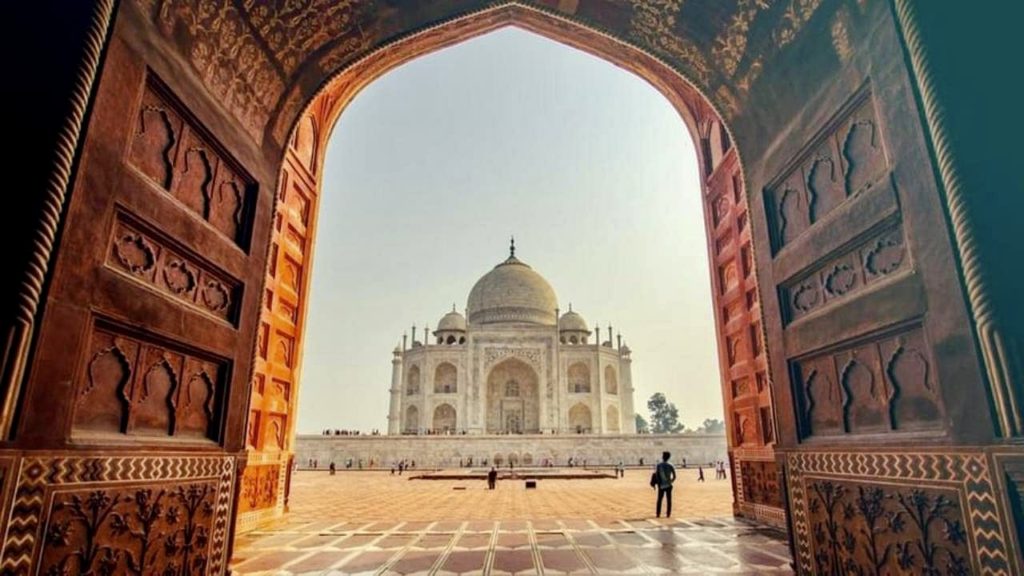The Real Story of the Taj Mahal is Obscured by the Beauty of the World’s Largest Mausoleum
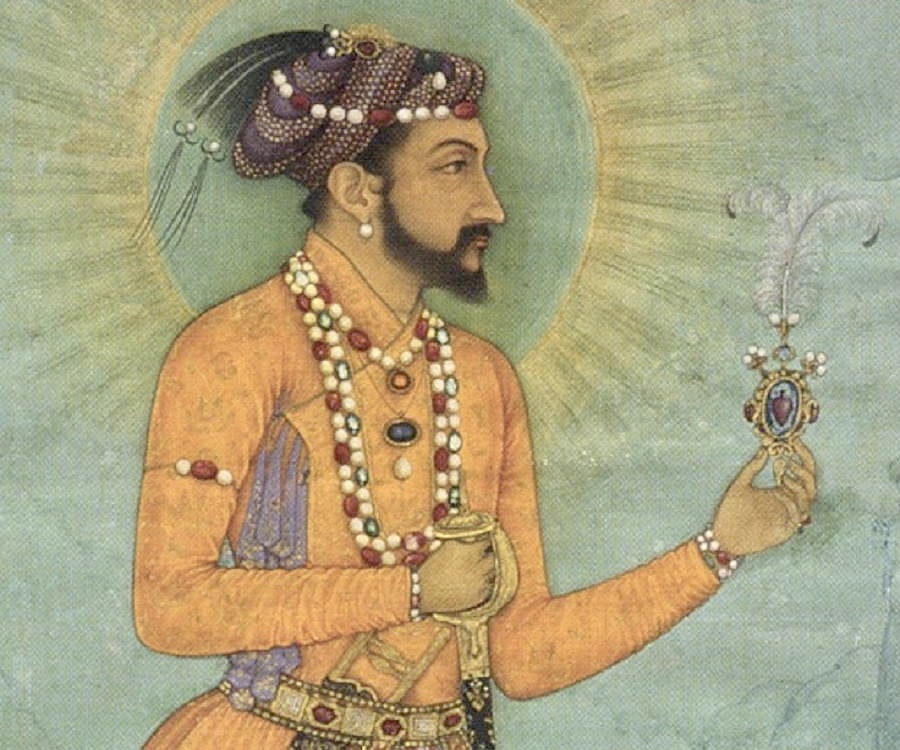
Emperor Shah Jahan ruled the vast Mughal Empire that included most of India. A builder on a monumental scale; he had the Mughal Empire’s resources to turn his visions into architecture. Some say he was a tolerant and enlightened ruler; a patron of scholars, poets and painters. Others revile him as a wicked man who was a cruel and evil religious tyrant. However, Shah Jahan is most famous for turning his undying love into inlaid marble.
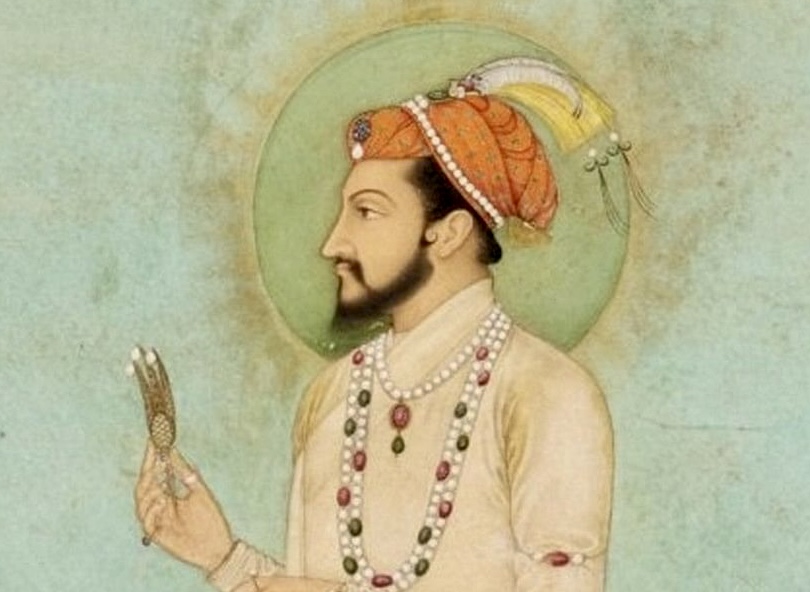
April 2022. The Taj Mahal, which translates to ”Crown Palace”, is the beautiful obsession of Emperor Shah Jahan. The domed building is a love memorial dedicated to his deceased wife, Mumtaz. It is a mausoleum designed as an earthly replica of Mumtaz’ house in paradise. Shah Jahan is interred there, also.
The Taj Mahal is sacred, but many tourists see it as secular. The Taj Mahal is revered by most Indians, but reviled by some. The Taj Mahal is also a modern pop sensation with foreigners. The site is one of the most Instagrammed buildings in the world (decorativesurfaces.com.) Some tourists appreciate the site’s architectural and historic depth; many do not. For example, most Taj Mahal blogs are written by tourists who had a casual visit to the site. They zipped by the Taj Mahal on a whirlwind tour of “The Wonder That Is India.” All writers wax eloquent on the Taj Mahal’s architectural splendor; and are moved by its beauty. Yet, without context, outsiders miss the full, deeper story. This article will do the full service to the fantastic tales behind the Taj Mahal; and also behind the mixed genius of grieving husband, Shah Jahan. The beauty has a dark underside.
The Standard Presentation of the Buildings and their Beauty
The section below, provides both photographs and a background description. The pictures have more impact than the text.
Each Picture Is Worth A Thousand Words
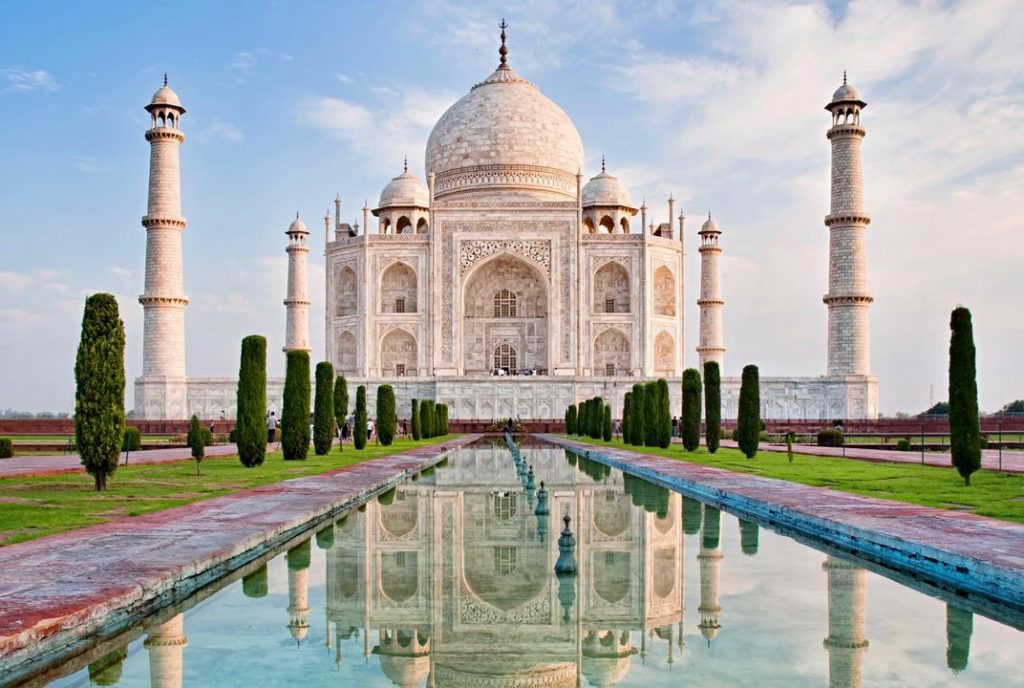
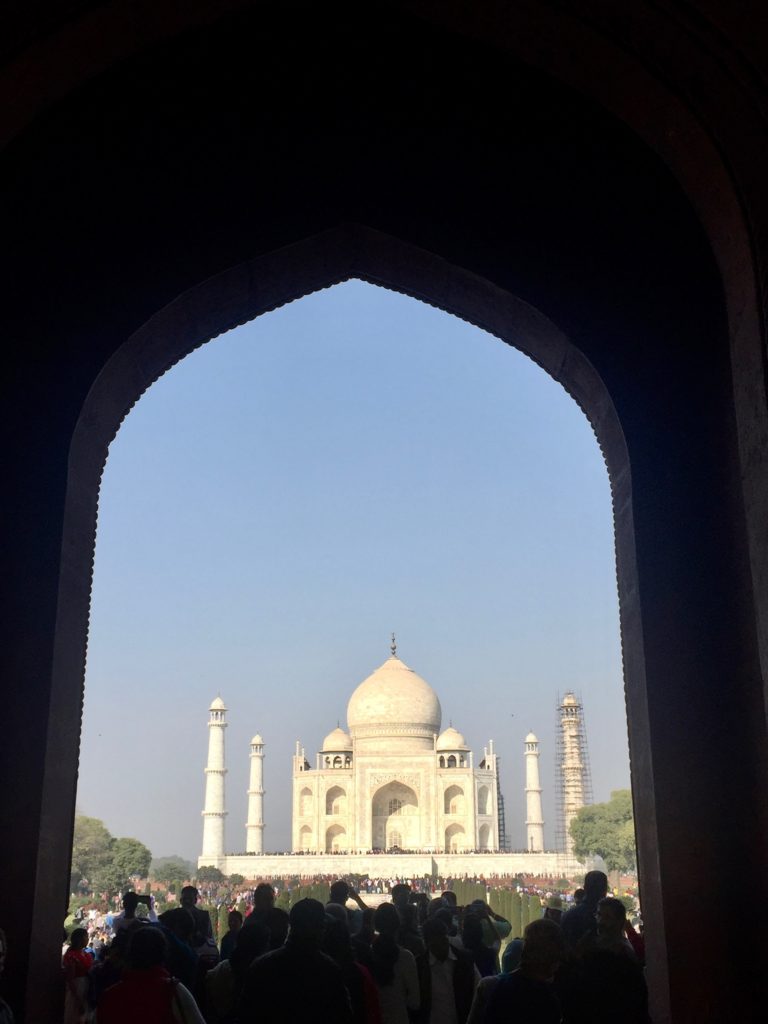
There are many mysteries to the Taj Mahal starting with: Why does it change colors?
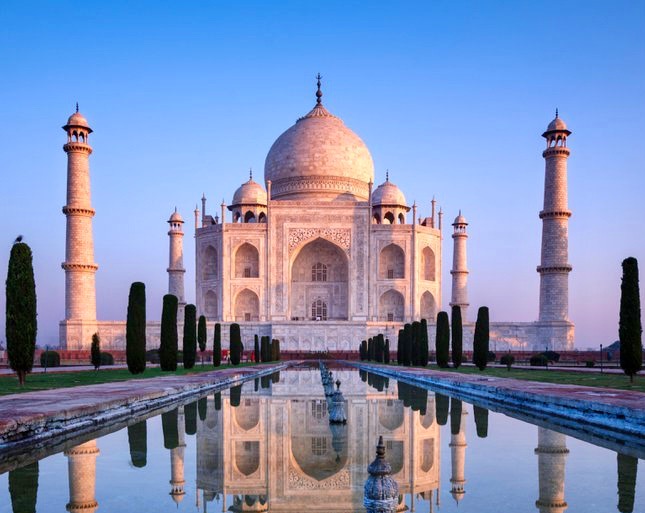
The Taj Mahal is an architectual chameleon, radiating in multiple colors based on the position of the sun. Plus, there is a never ending fight against age and pollution. Soot causes the sparkling white marble façade to slowly turn brownish-yellow. Occasionally, the exterior is treated to a spa rejuvenation using a mudpack facial. Indian women workers use their traditional facial treatment on the Taj Mahal. The women apply the mud pack; let the restorative mud do it’s job; and then wash the mud off with brushes. The blemishes vanish, and it’s glow returns. The author was there when the side columns were getting the spa treatment; and it was not a day spa. The mudpack process involves extensive scaffolding, many scrambling workers, and full coverage of the columns with the world’s largest burlap bag.
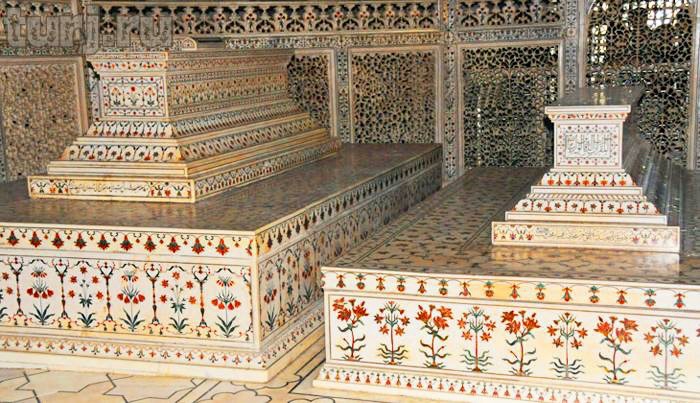
Inside the Taj Mahal, the burial crypts honoring Mumtaz Mahal and Shah Jahan are enclosed in an eight-sided chamber with pietra dura ornamentation. Pietra dura is hand-carved marble; inlaid with semi-precious stones including jade, crystal, lapis lazuli, amethyst and turquoise. The crypts are enclosed by a marble lattice screen. But the gorgeous crypts are just for show: The real sarcophagi holding the bodies are in a quiet room below, at garden level. Some Hindu nationalists say the crypts cover up the secret origins of the Taj Mahal. That story is described in the section, ”Some Hindus Love to Hate the Shah.”
But the Background Text is Important, too
The Taj Mahal, located in the town of Agra, is in north India about 3 1/2 hours from New Deli. Construction of the complex started in 1632, and was substantially completed in 1648. The height of the central building, the domed mausoleum, is eighty (80) feet, or 24.4 meters. The dome itself — just the dome — weighs in at twelve thousand five hundred (12,500) tons. The weight of the whole mausoleum is unknown. Yet, the Taj Mahal is more than a big mausoleum in the middle of four pillars. It is an extensive complex of buildings and gardens that extends over 55.5 acres (22.44 hectares.)
Hands down, the Taj Mahal is the pinnacle of Mughal culture and world architecture; a leading contender for the most beautiful building humanly possible. The entire complex is almost perfectly symmetrical: the central domed monument; the four surroundings columns; the reflecting pool; the main grounds; and the gardens that are divided into four quadrants. On the other side of the gardens are twin sandstone buildings that adds to the aesthetic harmony. All parts of the Taj Mahal are in complete balance with each other and aligned along a perfect east-west axis. Yet, the Taj Mahal has many tricks of proportions and illusions when seen in person. Upon entering the main gate, the monument appears incredibly close and large. However, as visitors get closer, it appears to shrink in size. The columns surrounding the main building look perfectly upright. The towers actually lean outward, providing aesthetic balance. Perhaps more importantly, the design allows the columns to fall away from the main crypt in a disaster, such as an earthquake.
Who is this Shah Jahan with the Edifice Complex?
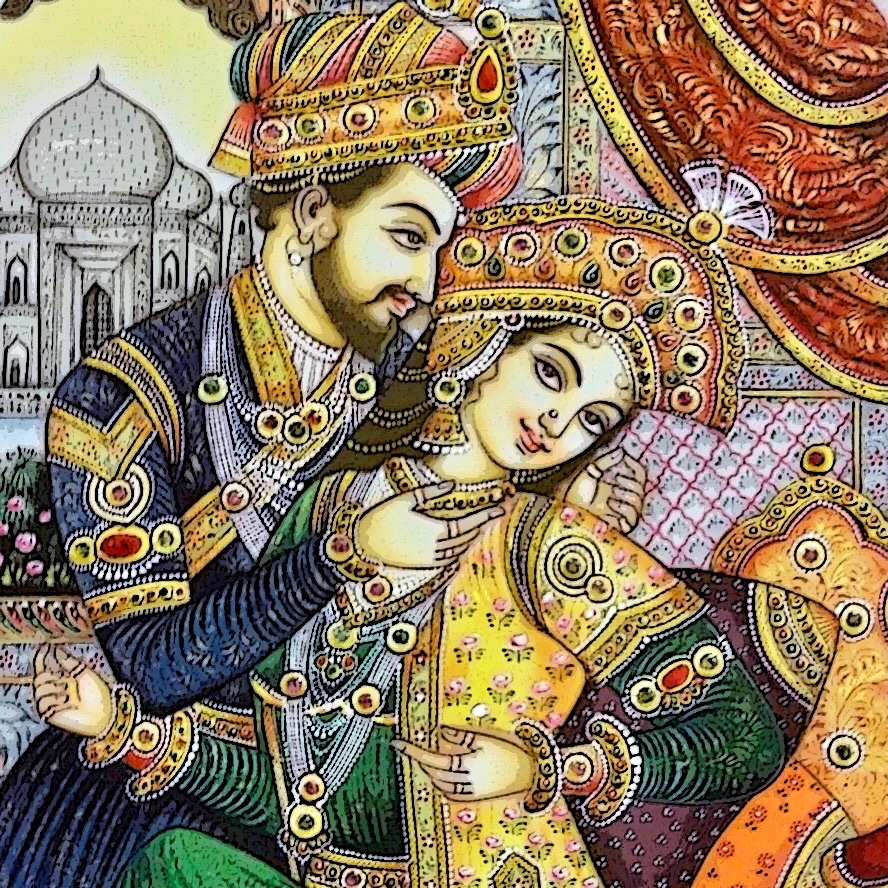
Shah Jahan was a prince born into Mughal royalty. The fifteen year old Prince Khurrum (Shah Jahan) was betrothed to a fourteen year-old grand daughter of a Persian noble. They married five years later, in 1612. Any strategic alliance from the marriage took a back seat to the couple’s growing ardor. After their wedding, Prince Khurram proclaimed his high esteem for his new wife, “finding her in appearance and character elect among all the women of the time.” Prince Khurrum gave his wife the title Mumtaz Mahal (Jewel of the Palace). She would become the unquestioned love of his life. They were married for nineteen years. Mumtaz would bear Shah Jahan fourteen (14) children. She died in childbirth of the last child.
Shah Jahan did take two other wives, but they were for convenience sake. According to the contemporary Court Chronicler, the other wives “had little more than the status of marriage. The intimacy, deep affection, attention and favour which His Majesty had for the Cradle of Excellence [Mumtaz] lacked by a thousand times what he felt for any other.”
Shah Jahan had desire for more than Mumtaz; he had an insatiable passion to build. Below are just some of Shah Jahan’s most grand structures. He definitely had an “edifice complex.” Just expand on one or more photographs below to see the grandeur of his vision made real: Architecture as frozen poetry.
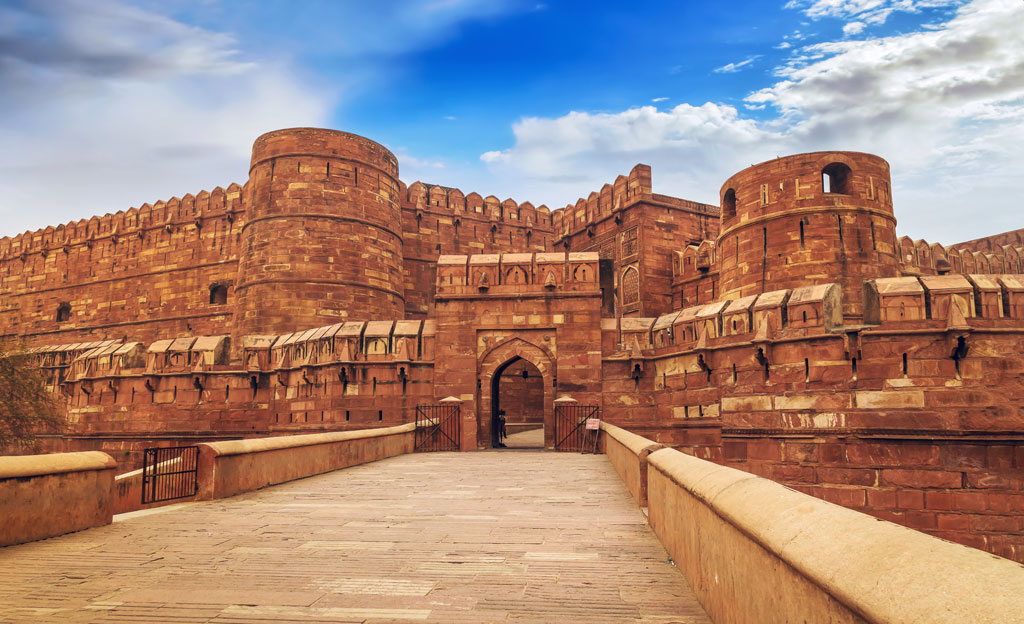
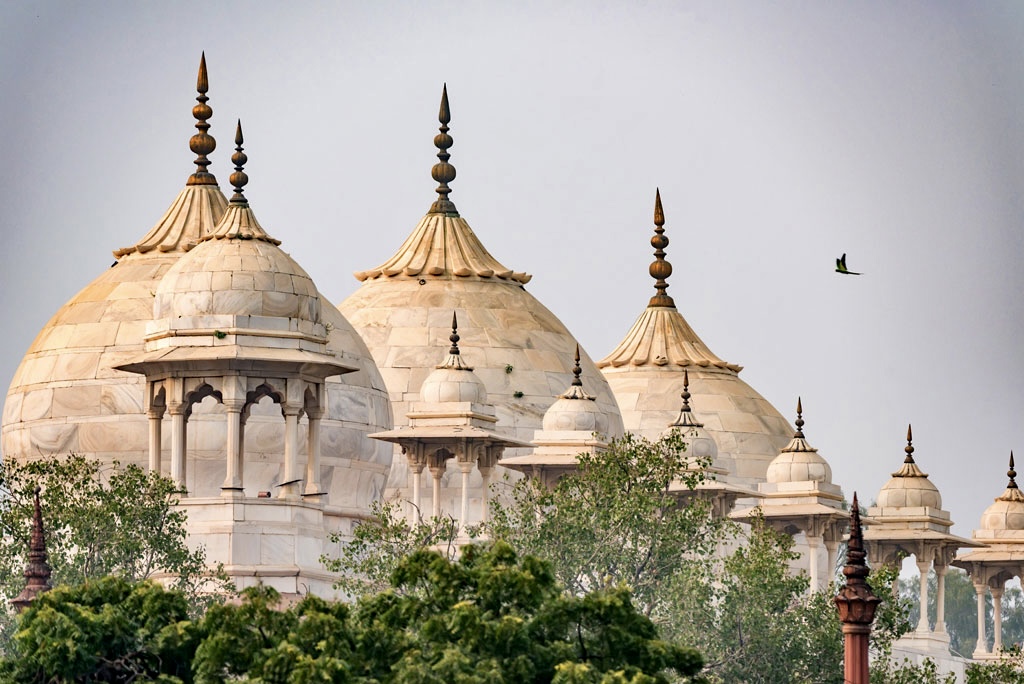
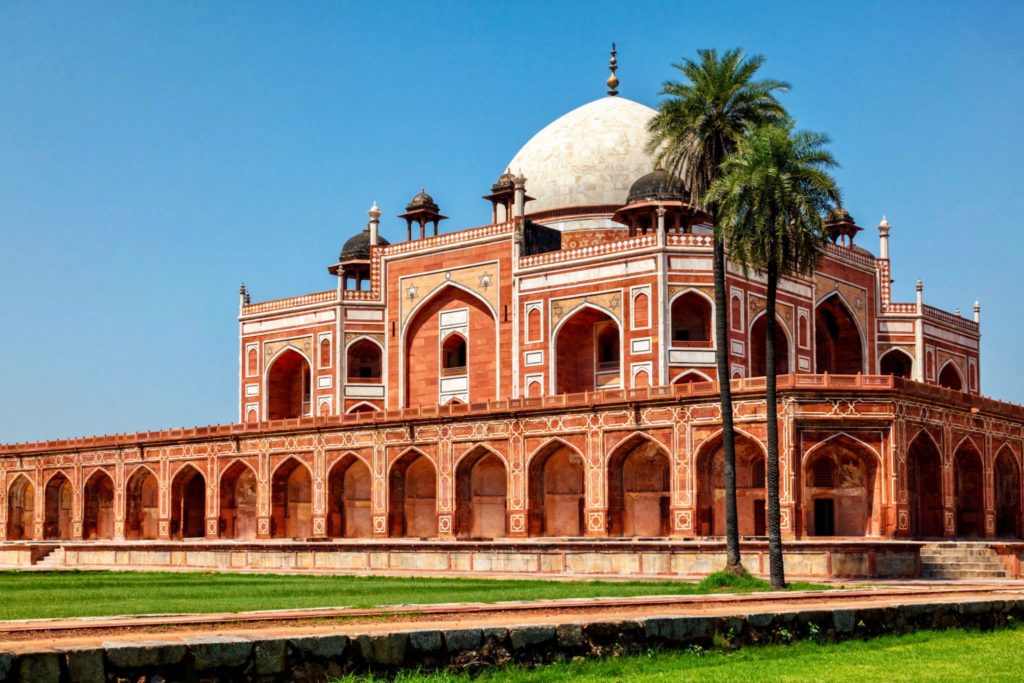
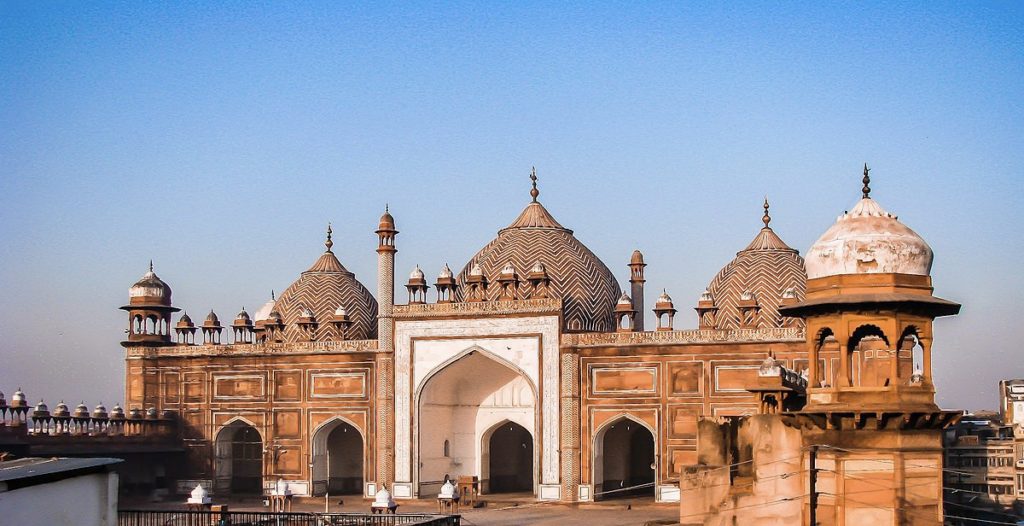
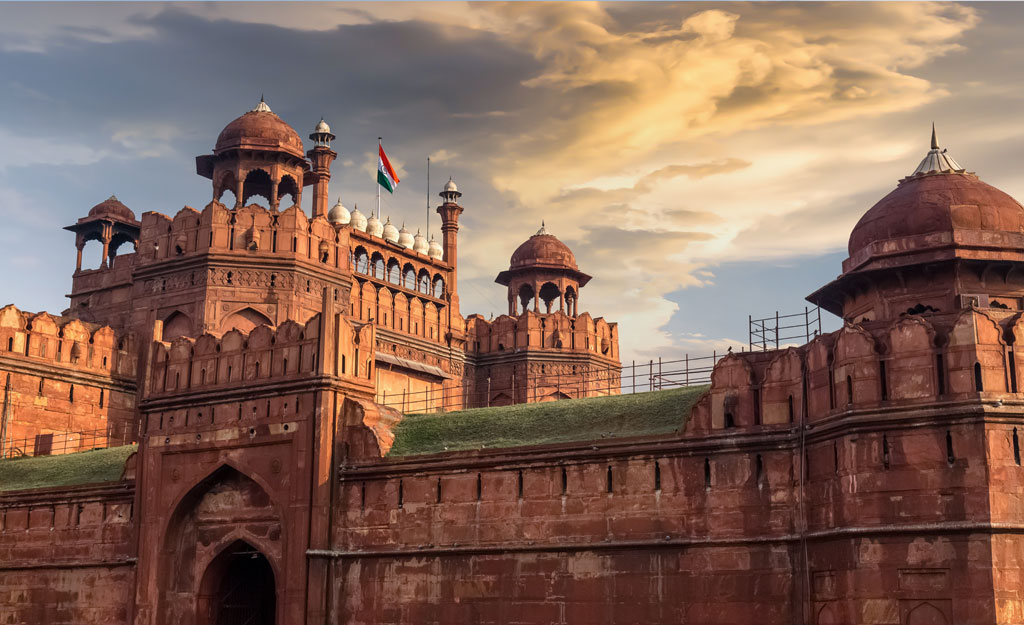
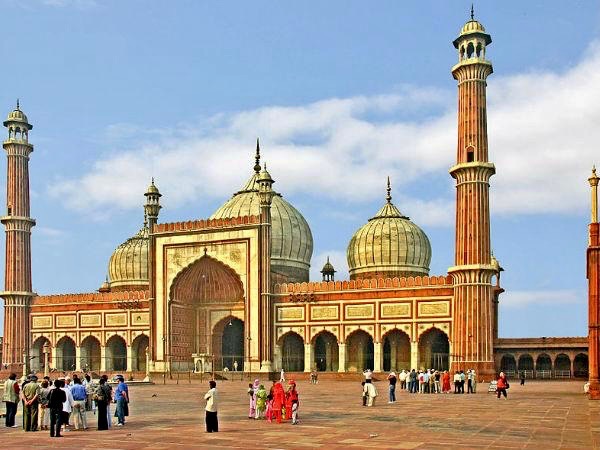
Shah Jahan is often accused of ignoring needed military actions and shoring up the Empire’s defenses. He also had to levy huge amounts of money, but drained the treasury for his building projects. On the other hand, the Emperor’s reign was also a period of great literary activity. He did not ignore the arts of painting and calligraphy which achieved new heights. His court in Delhi was urbane and sophisticated, ever elegant. The royal jewel collection was probably the most magnificent in the world. (Encyclopedia Brittanica)
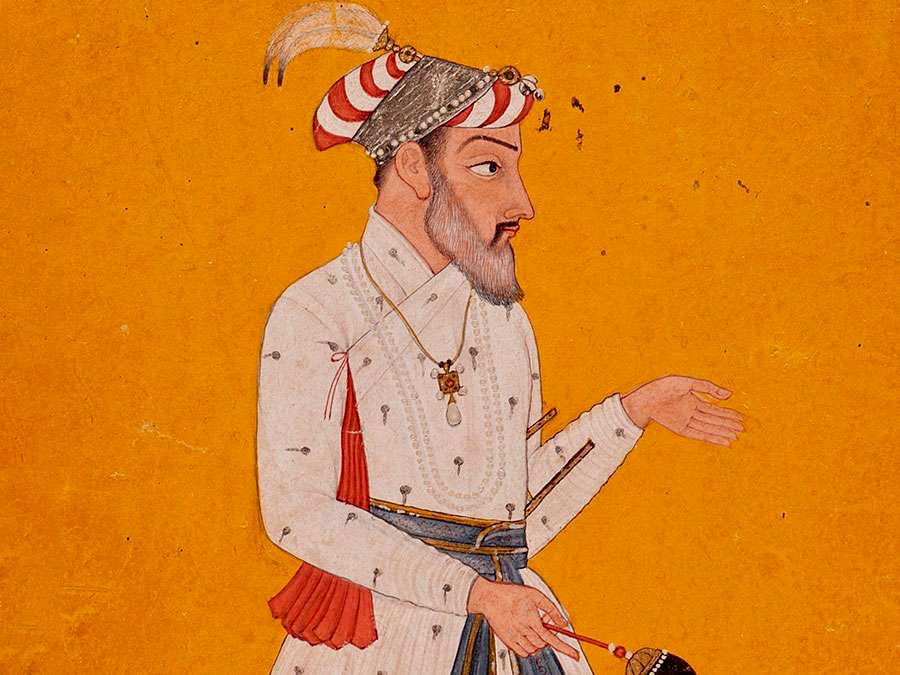
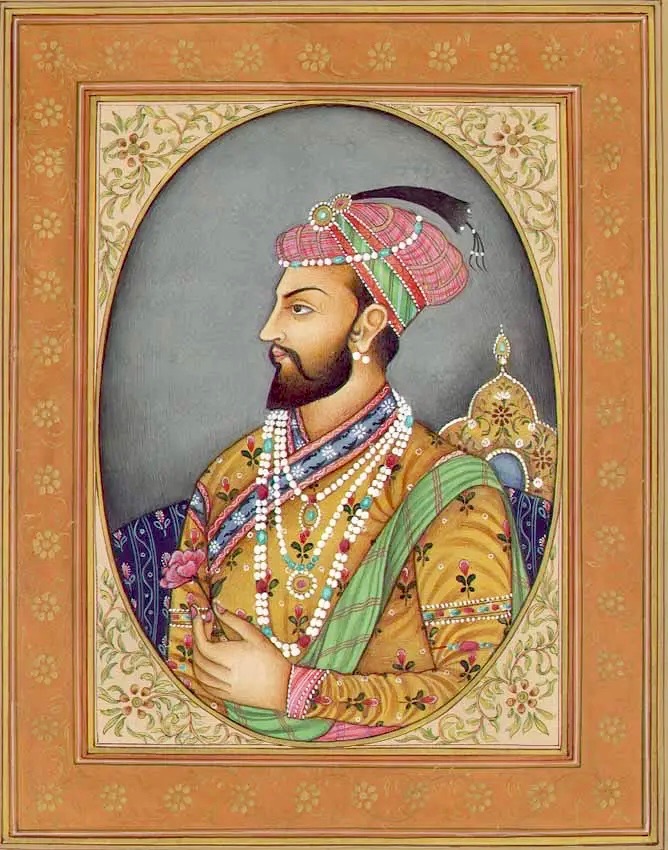
Shah Jahan’s First Grief: The Death of Mumtaz
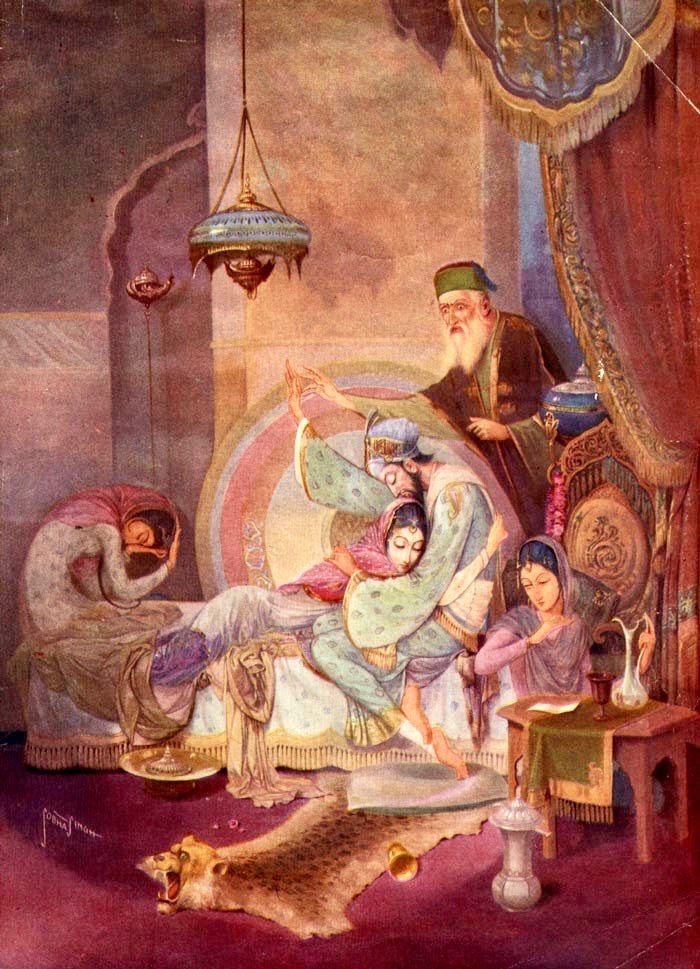
Mumtaz died in June 1631, from complications from the birth of their fourteenth child. The Emperor became inconsolable. For a week, he did not appear at court. He considered abdicating and living his life as a religious recluse. The Court Historian wrote that after her death Shah Jahan’s beard had “not more than ten or twelve grey hairs, which he used to pluck out, turned grey and eventually white” He soon needed “spectacles” as his eyes deteriorated from constant weeping. [They had eyeglasses back then?] Mumtaz died on a Wednesday; thereafter, all entertainment was banned on that day. For two years, Shah Jahan gave up listening to music, wearing jewelry, sumptuous clothes or perfumes. An honorary uncle said, “if he continued to abandon himself to his mourning, Mumtaz might think of giving up the joys of Paradise to come back to earth, this place of misery – and he should also consider the children she had left to his care.” Shah Jahan built the Taj Mahal to fulfill Mumtaz’ deathbed wish.
Shah Jahan’s Second Grief: The Treachery of his Sons
Shah Jahan clearly was obsessive. Later in life, he decided to build another Taj Mahal of black stone. This second monument would cost lot more than the original Taj Mahal. The Black Taj Mahal would be constructed close to the original one. The two Taj Mahals, one black and one white, would face each other. A bridge would connect the two. Building the second Taj Mahal would empty the royal treasury. This plan was more than Shah Jahan’s sons could bear. The construction began, but ceased when his sons deposed the Emperor. Two sons planned to overthrow the Emperor and seize the reigns of power. Before any possible coup, Shah Jahan fell seriously ill. The doctors all announced that there was no hope. From his death bed, Shah Jahan confirmed his prior decision: Eldest son Dara was his successor to the Mughal throne. Aurangzeb, the youngest son among the rebels, along with two other brothers, revolted against Dara. As the Emperor lay dying, a war of succession broke out among four of the Emperor’s sons. Aurangzeb ultimately defeated and killed his three older brothers. Aurangzeb killed another brother in his custody, a brother not part of the civil war. Aurangzeb was declared emperor.
Fatefully, Shah Jahan recovered from his near-death illness. Fearing his father’s wrath, Aurangzeb made his father a prisoner in Agra Fort, ironically built by Shah Jahan. As Emperor, Shah Jahn was used to a life of extreme extravagance. He had a kitchen staff of at least one hundred people. One of the Emperor’s favorite dishes was rice pilaf. Shah Jahan had each grain of rice separately covered in silver warq, an edible silver filigree believed to boost general health and act as an aphrodisiac. In Agra Fort, the deposed Emperor led a prisoner’s life. He was deprived of music, his favorite entertainment. He was allowed to choose only one food. He wisely choose chick peas as they could be cooked many ways. He had only one prison consolation, and it was not the chick peas. From his solitary cell, Shah Jahan had but one window. That window provided a clear view of the Taj Mahal. For his last eight years, The former Emperor stared at the Taj Mahal and pined away in grief for Mumtaz. Shah Jahan’s only regret in life was the death of Mumtaz. He died at age seventy four (74.)

The Passing of Shah Jahan This 1902 miniature was painted by the Indian artist Abanindranath Tagore. The painting depicts Shah Jahan staring upon the Taj Mahal on his deathbed. At his feet is his faithful daughter, Jahanara. Note: painter A. Tagore was from a storied, wealthy family. The Tagore clan had many members who were famous artists, politicians, activists and philanthropists. The painter was the nephew of the the well-known Indian poet and artist, Rabindranath Tagore.
The Hidden Story of the Taj Mahal and Shah Jahan is Sprinkled with Myths
The muddied underbelly of Shah Jahan’s rule holds many stories, and some are extreme attacks on the Emperor. Below are some true stories, mixed with exaggerated details. Other stories are myths. This section tries to separate fact from fiction.
Fact: Shah Jahan and the Mughal Empire were Muslim
The Mughals were Muslims invaders who ruthlessly grabbed power. The Mughal dynasty established an Islamic Empire in Hindu India. The Mughals ruled India for about two hundred years. Two hundred years is a small slice of Hindu Indian history which has lasted about three thousand five hundred (3,500) years and counting. Yet, the Mughal Empire had a great impact on Indian life that continues to this day including: Islamic art and architecture; establishing Delhi as the capital city; expanding the Muslim footprint in India; to Indian cuisine (including kebabs, rice biryani, and chick pea cuisine from Shah Jahan’s imprisonment.) Outsiders make the common assumption that the Taj Mahal is the crowning achievement of Hindu culture and architecture. The Taj Mahal is actually the crowning achievement of Indo-Muslim architecture. All of Shah Jahan’s architecture reflects the supremacy of Muslim culture during that era.
The Mughals were of Turkic-Mongol origin. The Mughal dynasty was established by Babur, originally a warrior cheiftain from Uzbekistan. Babur descended from the founders of two fierce Asian dynasties. On his father’s side was Tamerlane. Emperor Tamerlane, who was handicapped (his name comes from “Tamur the Lame”,) was never defeated in battle. He established the Timurid Empire with an impressive march of military conquests: rampaged Asia Minor; gobbled up modern day Afghanistan and Iran; picked up northern India; scooped up parts of Russia; and conquered straight through to Georgia. On Babur’s other side, his mother was a direct descendant of Genghis Khan, of Mongol Empire fame. Thus, Babur had the blood of two empire builders in his veins. Shah Jahan was a direct descendant of Babur. He continued the Muslim Mughal traditions. Many of Shah Jahan’s grand edifices glorified the Muslim religion. The mosques were built to support and expand the Islamic faith in India. The above photographs of the Emperor’s building spree show Shah Jahan’s love for “masjids,” which are Islamic Mosques. Some of the most beautiful and grand mosques in the world are in India, thanks to Shah Jahan. The four columns around the Taj Mahal’s domed mausoleum are Islamic minarets which are part of any self-respecting Mosque.
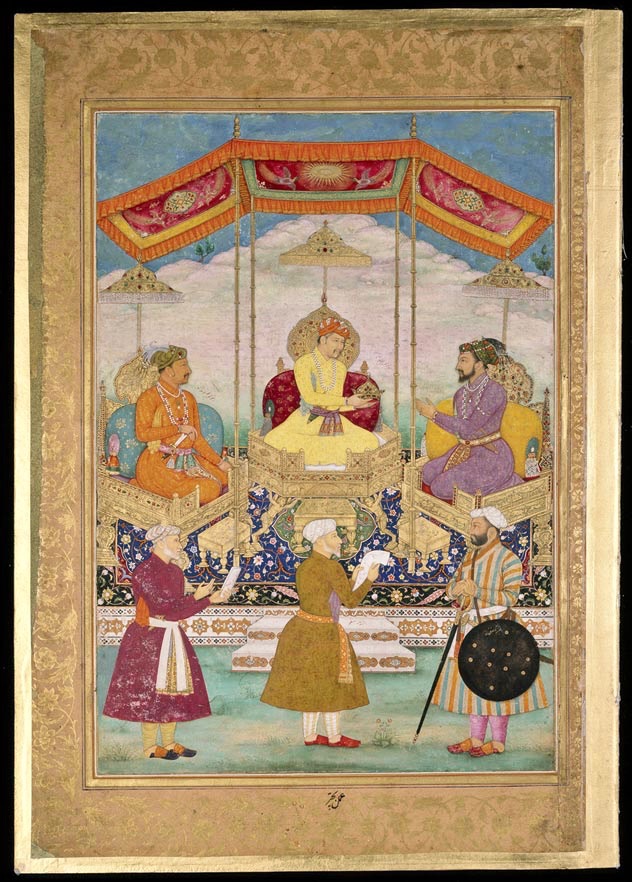
Fact: Some Hindus Love to Hate Shah Jahan Based on True Stories, Shaky Stories and Myths
To this day, a segment of Indians despise Shah Jahan for imposing an alien, oppressive culture on Hindu India. From this perspective, Shah Jahan was the worst of the Mughal emperors. However, the historical record is mixed on these claims. Some of the allegations may be true; others are clearly fatuous. In spite of the murky truth, there are vociferous critics of Indian Hindus who revile Shah Jahan. He is hated for his brutish cruelty to the native Hindus. He is hated for prolific Mosque building. He is hated for elevating the Islamic faith and increasing the Muslim population. He is hated for his evil personal life.
What percentage of the Indian population holds these views is unknown to this author. The author made but a short trip to India (sadly, too short considering.) During his visit, a number of both Hindus and Muslims complained to the author, a foreign stranger. Each group, especially taxi drivers, vented their grievances against the other group. No one mentioned the Taj Mahal or Shah Jahan. The author conversed with local hospitality workers (hotel staff, tour guides, waiters) plus all sorts of people from many walks of life. Most of them were probably not well educated, certainly not focused on Shah Jahan.
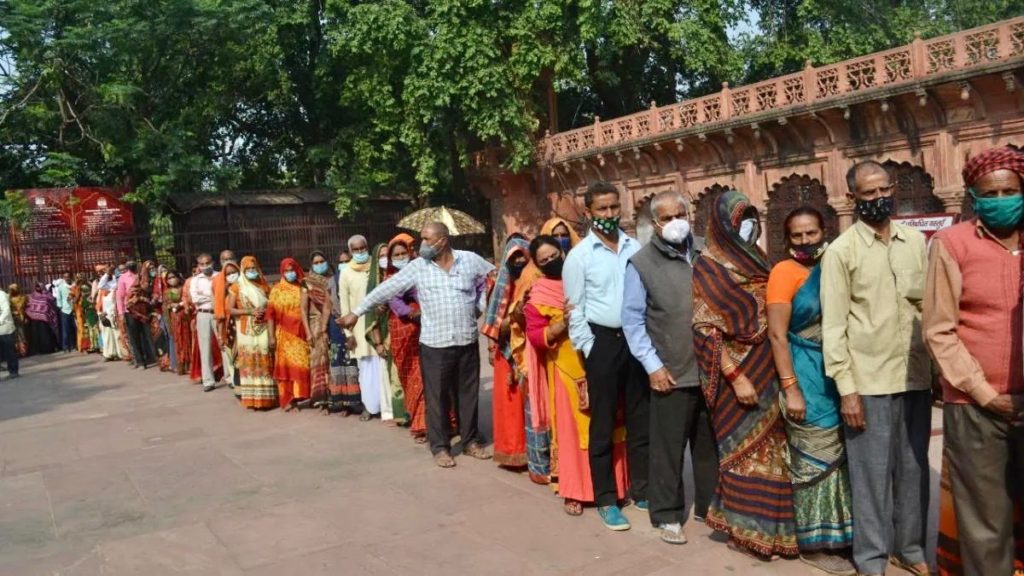
Note: Indian citizens currently pay the relatively small admission fee of $3.20 USD. The trade-off is that locals have a long line to reach the ticket office. There is a separate no-wait line for foreigners who pay sixteen dollars and change.
As to the tenor of Shah Jahan’s reign, there are many grievances against this Muslim overlord. Some references, including claims from sources suspected to be easy on the truth, state that Shah Jahan was a more ‘orthodox’ Muslim than his predecessors. In this vein, his era was characterized by strict adherence to shari‘a law and religious intolerance of Hindus and Christians. An oft-cited example: in 1632, the Emperor ordered all newly constructed Hindu temples to be demolished. Christian churches were also destroyed. Furthermore, Hindu men were tortured to Islam and women forced into harem. (See for example, encyclopedia.com and biography.yourdictionary.com, both sites unknown to this author.) Other resources, such as Encyclopia Brittanica, claim that Shah Jahan was relatively tolerant towards Hindus. These opposing positions cannot both be true. Maybe the truth is somewhere in the middle?
There is a separate damning allegation bandied about: the Taj Mahal was built atop a Hindu Temple. Supposedly, originally on the site was a mansion owned by Hindu ruler, Jai Singh. This story has legs. In the expanded version, the Taj Mahal was originally a Hindu temple and palace. Shah Jahan seized the structure after a battle. He built upon the existing temple and later renamed it the Taj Mahal. As proof, the detractors claim that in the Taj Mahal exists a secret, red stone floor beneath the Emperor’s crypt. This floor leads to others pathways that lead to twenty-two hidden rooms. Some of these rooms supposedly have Hindu designs on the ceilings. Shah Jahan, the ultimate exquisite craftsman, also crudely walled over a door with unlined bricks. The claim is that this rough blockade walls off other parts of the original Hindu temple. This fantastic story continues with an even more fantastic tale; actually, there are over a thousand rooms hidden from view. They must be small rooms. There is a damning allegation that the Indian government has covered up these tell-tale signs, and refuses to allow any excavations. Irrespective of government actions; this whole story has been widely debunked, especially the extreme elaborations. But it may have some grain of truth.
There exists ugly rumors and claims concerning the Emperor’s personal life. These stores are whispered about and shouted from the rooftops. Shah Jahan is accused of debauchery his entire adult life. The Mughal Emperors, and indeed many rulers in many traditions, had numerous concubines and mistresses. These women were often part of the harem, an established institution. Apparently, Shah Jahan married one of his other two wives before he married Mumtaz. Again, this may not be unusual. Muslim men are allowed up to four wives at the same time. Yet, the stories get worse. There is condemnation that Shah Jahan whored around his entire adult life; outside of established cultural boundaries. Are there any boundaries for an absolute monarch? As ”proof” the proponents list by name up to twenty-three children, and most of their mothers; plus asserting there are an unknown number of other offspring. The historical record confirms that the Emperor had fourteen children with Mumtaz, and two by his other wives. It is certainly possible there were more of his children scampering about during his long life – but twenty three and counting? Finally, there is the wild claim that Shah Jahan married, or just raped, his own daughter Jahanara, because she looked like Mumtaz. No. In fact, Jahanara was the Emperor’s most dutiful and faithful daughter. She was the one who tended to his needs in prison. Jahanara is depicted in the painting by Tagore above, showing her comforting her dying father. This salacious sex story is not true.
Myth: Shah Jahan Cut off the Worker’s Hands
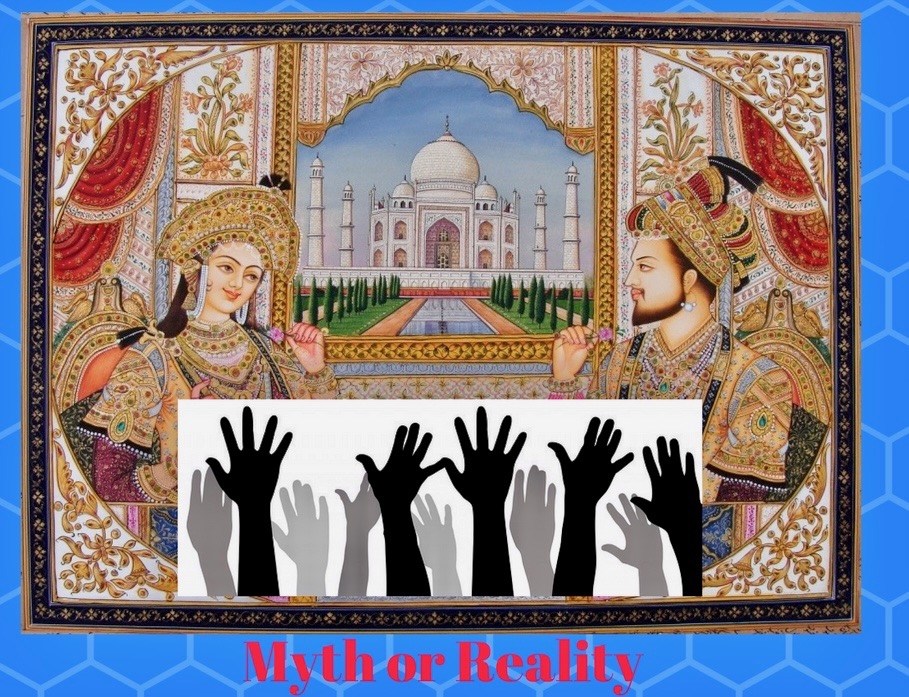
The unbelievable, but oft-repeated story, is that Shah Jahan ordered the workers’ hands be cut off after construction was complete. Thus, the amputated workers could not build an edifice more beautiful than the Taj Mahal. This author first heard this whopper while eavesdropping on an official Taj Mahal tour. The tour guides tout this saucy lie as part of the tour puffery. The wowed crowd of tourists drank it up. Think about it: How many hand executioners would it take to maim many thousands of workers? The workers are going to queue up for this mayhem? And what did Shah Jahan do with 20,000 pairs of hands?
To build the Taj Mahal, there were not enough local workers and expert craftsmen. Shah Jahan imported many, many skilled craftsman from all the known Western world. In all, this project took more than 20,000 workers from India, Persia, Europe and the Ottoman Empire. One thousand elephants labored alongside the workers. (history.com.) Amputate their hands? This mayhem never happened. There is no archaeological evidence such as hand skeletons from mass amputation. No wide spread mutilation was documented in any contemporary records; nor did any foreign visitors mention it in their writings. The era of Shah Jahan was the “Golden Age of Mughal Construction.” Building never stopped during his reign. After the Taj Mahal, Shah Jahan constructed numerous palaces, forts, mosques, etc. He even founded and built a city named Shahjahanabad – Shah Jahan Town. If he ordered amputations, then no worker would have supported his ventures; nor would anyone be left to do the construction. Another reason to be skeptical is that Shah Jahan built large-scale community housing near the construction site for all the workers. The true story is that Shah Jahan imposed a moral boundary, or contract, that his workers cannot offer their services to any other emperor.
Should Readers Put the Taj Mahal at the Top of Their Travel List? Absolutely Yes. The Taj Mahal and Shah Jahan are the Highest Expression of so Many Things — All Dished up with Some Great Dirt.

Shameless Plug. Please consider signing up for a FREE subscription to this website which is both a travelogue and literary journal. Notices of new postings, about three new articles a month, will be sent to your email inbox. Note: Your information will never be marketed, sold, or used in any way. The marketing of personal data is a horrible idea.
